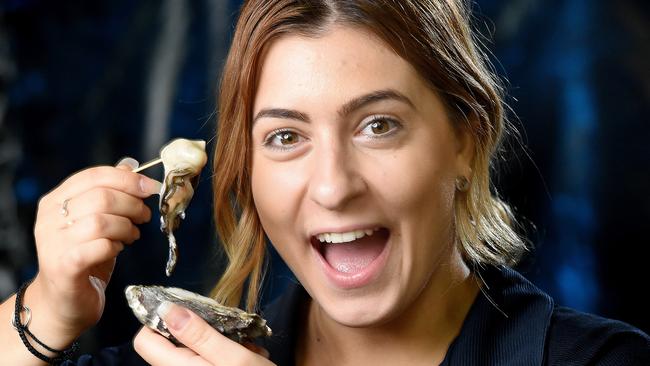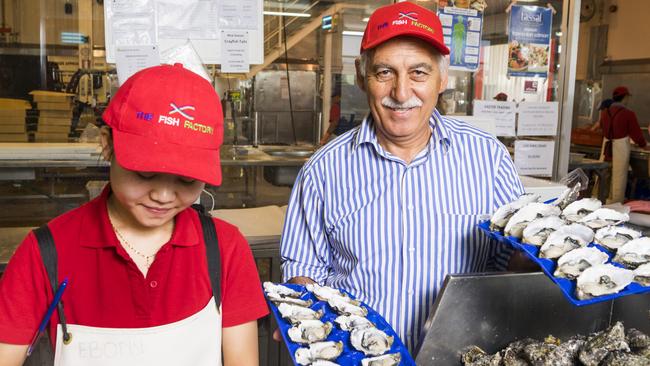South Australian oysters defy Tasmanian POMS virus to remain affordable for Easter
EASTER shoppers stocking up on South Australian seafood need not worry about the price of oysters, despite a devastating virus affecting Tasmanian oyster farms.

SA News
Don't miss out on the headlines from SA News. Followed categories will be added to My News.
EASTER shoppers stocking up on South Australian seafood need not worry about the price of oysters, despite a devastating virus affecting Tasmanian oyster farms.
There will be no ripple effect for now, and not even Christmas, says SA fishmonger Michael Angelakis, who predicts it may be two or three seasons before we feel any onflow effect to the local industry.
The Pacific Oyster Mortality Syndrome (POMS) virus attacking Tasmanian farms kills oysters, but is harmless to humans. Baby oysters, or spats, are most vulnerable.
Industry sources fear about 70 per cent of Tasmanian product will die, and that interstate prices will rocket from about $14 to $20 a dozen.
But local fishmongers insist only Victorian and NSW markets supplied by Tasmanian farmers will suffer because SA has a strong oyster farm belt in its pristine waters of Eyre and Yorke peninsulas and Kangaroo Island.
We’re assured the average $12-$15 for a dozen local oysters, depending on variety and size, will remain stable.
On Friday, at the Adelaide Central Market, Samtass was selling Smoky Bay oysters for $14.99 a dozen, and a Coffin Bay dozen at Cappo was $11.99.

Mr Angelakis said there could be issues in years to come because SA growers normally use Tasmanian spat, but with two thriving hatcheries in Coffin Bay and Louth Bay on the Eyre Peninsula, with new farming methods and non-spawning triploids filling the gaps, the state is “well stocked”.
Fishmonger Len Toumazos, of The Fish Factory at Athol Park, said there was “definitely no problem in SA”.
“We have plenty here,” he said, expecting his usual $12-$14.50 a dozen price to remain steady through Easter.
Bob Simmonds of Oyster Bob, a “go-between” for farmers, retailers and restaurants across Australia, said that if the two SA hatcheries step up production and meet almost certain growth in demand over the next few seasons, it could even be a local industry windfall.
“Because Tasmania has lost so much, there will soon be a hole to be filled,” he said.
Sophia Nikolakopoulos who is part of the team expecting to be “run off our feet” this week at Angelakis Bros in the Adelaide Central Market, says Atlantic salmon and flathead are two other big sellers over Easter.
“I will be adding oysters to our traditional Greek meals over Easter,” she says.
Mr Angelakis, who owns an oyster farm at Lower Pitt Water, on the nutrient-rich east coast of Tasmania, is waiting to hear the complete damage report but expects at least 20 per cent of his oysters have been wiped out.
“But we’ll be all right in SA for at least two to three seasons,” he says.
“What might happen is that Victoria and NSW will be looking more to South Australia instead of Tasmania for supplies, putting pressure on our farms, but the oyster market here is strong.”
Mr Angelakis says there is uncertainty for Tasmania ahead, because now the POMS virus is there “it will always be there”.
Fish prices have fluctuated a little in South Australia over the past year. While barramundi prices are stable, King George whiting and Snapper have dropped. Salmon is also expected to be popular on Easter tables as a more affordable option.


